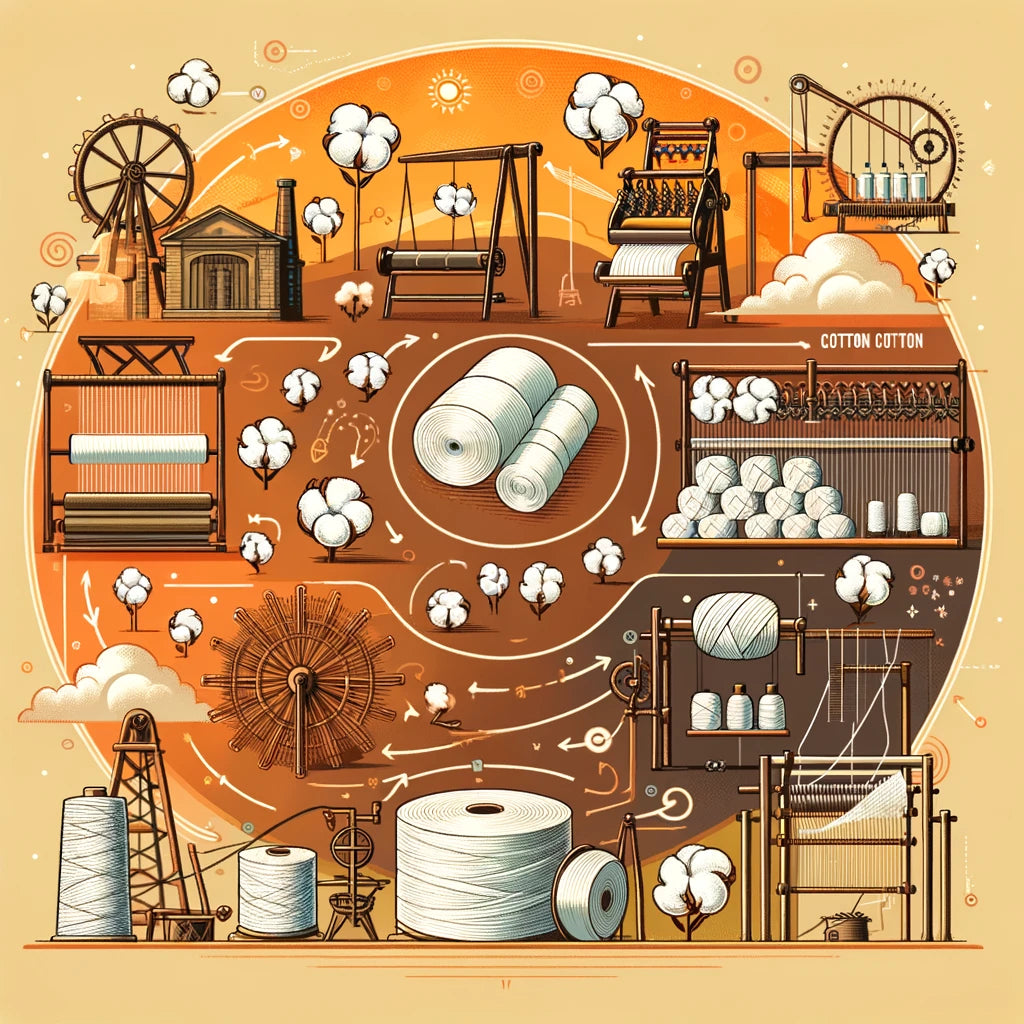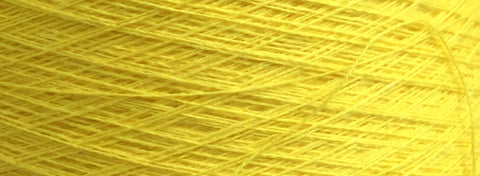
The Art of Selecting the Perfect Yarn for Peshtemal Towels
Share
Creating the ideal peshtemal, the traditional Turkish Towel (aka. Turkish Beach Towel) celebrated for its absorbency, durability, and quick-drying properties, starts with selecting the appropriate yarn. At Towel Age, we are committed to crafting peshtemals that surpass our partners' expectations, which begins with an in-depth understanding of yarn types, numbers, and their nuances.
Understanding Yarn Choices for Peshtemal Production: A Guide for Brands
The choice of yarn is crucial in the production of peshtemals, known for their lightweight and quick-drying qualities. Many of our partners encounter challenges due to a lack of detailed knowledge about yarn types, numbers, and structures. This guide aims to clarify these aspects, aiding in informed decision-making for your peshtemal products.
Yarn Types: Ring, Carded, and Open-End
Ring Spun Yarn: Known for its strength, smoothness, and fineness, ring spun yarn is our standard choice for crafting high-quality peshtemals. This yarn offers a softer feel and enhanced durability.
Carded Yarn: Slightly coarser than ring spun, carded yarn provides a breathable and soft texture with a rustic appearance, often chosen for traditional aesthetics.
Open-End Yarn: Produced rapidly and cost-effectively without spindles, open-end (rotor) yarn is suitable for budget-friendly lines, though it may not match the softness and strength of ring spun or carded yarns.
Why Ring Spun Cotton Yarn Stands Out
Our dedication to excellence is reflected in our yarn choice—100% ring spun cotton. Esteemed for its exceptional strength, softness, and longevity, it lays the ideal foundation for high-quality peshtemals. The ring spinning process yields a tighter, smoother, and finer yarn, resulting in luxurious, highly absorbent, and durable peshtemal towels.

Understanding Yarn Numbers
The yarn number (Ne) is a measurement commonly known as the "Number English" system, extensively used for cotton yarn. This system quantifies the length of yarn in a specific weight, where the yarn number indicates how many times 840 yards of yarn weigh one pound (approximately 453.6 grams). A higher number signifies a finer yarn, as it means more lengths of yarn per pound.
In the Ne yarn numbering system, the count reflects the number of 840-yard lengths per pound. For instance, if 1 pound of yarn extends 20 times 840 yards (equivalent to 768 meters), the fineness of the yarn is denoted as Ne 20. In other words, the Ne number shows how many times 453.6 grams of yarn measure 768 meters in length.
Similarly,
16 Ne: If the length of 1 pound of cotton yarn is 16x840 yards, this yarn is classified as number 16, indicating it is relatively thick.
20 Ne: If the length of 1 pound of cotton yarn is 20x840 yards, it is finer than 16 Ne.
30 Ne: If the length of 1 pound of cotton yarn is 30x840 yards, this is finer than both the previous examples.
This system provides a standardized method to compare the fineness or thickness of yarns, offering a clear indication of the yarn's quality and suitability for various textiles. The "Number English" Count System (Ne) serves as a crucial tool for manufacturers, designers, and consumers in making informed decisions about yarn and fabric selection.
Other yarn measuring systems
In addition to the Number English (Ne) measurement system, several other yarn numbering systems are used worldwide, offering alternative methods to quantify yarn fineness. These include the Number Metric (Nm), Tex, Denier, and Worsted system, among others. Each system has its unique way of measuring yarn, catering to different types of fibers and manufacturing practices.
One such alternative is the Number Metric (Nm) system, widely recognized in many countries. The Nm system measures the length of yarn in meters per kilogram of weight. Unlike the Ne system, which is based on the length of yarn in 840-yard increments per pound, the Nm system provides a metric measurement, indicating how many meters of yarn you get per kilogram. This system is particularly useful because it offers a direct understanding of yarn length relative to weight in the metric system, making it straightforward for international use.
For instance, converting from the Ne system to the Nm system can be achieved through a specific conversion factor. To illustrate, a yarn with a Ne 20 (indicating the yarn is fine enough that 20 lengths of 840 yards each weigh one pound) can be converted to the Nm system by multiplying the Ne number by approximately 1.693. Therefore, Ne 20 yarn is equivalent to Nm 33.86. This calculation showcases how Ne and Nm values provide a standardized method to compare the fineness or thickness of yarns across different measurement systems, ensuring manufacturers, designers, and consumers can make informed decisions regardless of the system they are more familiar with.
Adding this segment to your blog will enrich the content by providing a comprehensive overview of yarn numbering systems and their interrelations, enhancing the reader's understanding of yarn fineness across different standards.
Tailoring Yarn Number to Design and Weight Requirements
We customize the yarn number according to the specific design and the desired weight of the final product, avoiding a one-size-fits-all approach. For a heavier feel, we might choose a lower yarn number like 20/2, whereas for a lighter, delicate touch, a higher yarn number like 30/1 is preferred.
Single vs. Double Ply
The terms "single ply" and "double ply" indicate the number of threads twisted to create the yarn, with double ply yarns (e.g., 20/2) being stronger and more absorbent than single ply (e.g., 20/1). This distinction makes double ply yarns ideal for durable, high-performing peshtemals.
Customization Through Ply and Pattern
Our understanding of our partners' needs goes beyond yarn type selection; we also tailor the ply and pattern as required. Whether achieving a balanced feel with a 20/2 ply for both warp and weft or adapting to designs necessitating multiple weft colors with a combination of 20/1 and 20/2 ply yarns, our customization ensures each peshtemal is both beautiful and functional.
Our Promise: Quality and Partnership
Viewing ourselves as partners rather than mere suppliers, Towel Age's commitment to using 100% ring spun cotton yarn underscores our dedication to quality. By selecting the appropriate yarn number and ply based on design needs and desired product weight, we ensure our towels reflect our commitment to excellence.
We hope this guide highlights the significance of yarn selection in peshtemal production and demonstrates how Towel Age prioritizes quality and customization to meet our partners' needs. As we continue to produce towels that represent the essence of Turkish tradition, we invite you to join us in this journey towards excellence.
Disclaimer: The information provided in this blog post is for illustrative and educative purposes only. Please consult TowelAge for specific details.
Featured Image credit: DALL.E AI
Yellow yarn image credit: Huseyin Gonullu from Towel Age

2 comments
Dear Terrie,
Thank you so much for your kind words and for taking the time to share your feedback on our article. We’re delighted to hear that you found it educational and helpful!
At Towel Age, we are committed to providing valuable insights and information to individuals and businesses interested in home textile products, such as peshtemals, peshkir hand towels, throws, bedspreads, and more. Our goal is to assist those looking to have manufactured these products or those interested in wholesale purchasing for resale in their own countries.
Should you ever have specific questions or need further information not covered in our blog, please do not hesitate to reach out. We’re here to help and would love to address any inquiries you might have.
Additionally, we welcome suggestions for future blog topics. If there’s a particular subject or area you think would be beneficial for us to cover, we would be grateful to hear your ideas.
Thank you once again for your support. We look forward to continuing to provide you with content that meets your needs and interests.
Warm regards,
Hugo (Huseyin) Gonullu
Towel Age
Thank you for posting this very educational article. It is very helpful!